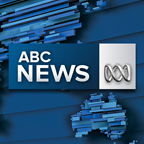
For many Australians living with blindness or vision impairment, it can be difficult to identify their representation in mainstream Australian sport.
Key points:
The Australian Open will host a series of exhibition matches between blind and low-vision tennis players
The matches form part of a broader campaign to promote a better representation of disability in sport
An online survey suggests nearly two-thirds of Australians with a disability believe they are under-represented in sport
But the Australian Open is about to host exhibition matches featuring blind and low vision (BLV) tennis athletes for the first time in an effort to raise awareness and promote the emerging sport.
The matches, to be held on Monday, January 23, will star Australian women's top-ranking B2 BLV tennis champion Courtney Webeck along with others who have a vision impairment.
"I think blind tennis has the ability to grow to an amazing platform over the next few years," Webeck said.
"We've seen it happen with wheelchair tennis at a high level to the Paralympics."
Blind Sports Australia has partnered with a payment processing corporation to fund the BLV tennis matches at the tournament, as well as local tennis clubs.
"They're putting money back into grassroots tennis to give athletes with a vision impairment priceless opportunities to enjoy the sport, whether it's being social or at a high professional level," Webeck said.
Using sound to play
Blind tennis is typically played on a brightly lit indoor court. The court is smaller than a regular tennis court and the rackets used by players are shorter.
The blind tennis ball or sound ball is made of foam and contains a bell or rattle that helps players gauge which direction a ball has been hit and whether it is a backhand or forehand hit.
Blind Sports Australia chief executive Matt Clayton hopes introducing blind tennis to a larger audience will pave the way for more games to occur.
"It's a great opportunity to showcase for the first time some matches at the Australian Open," he said.
"I'd love to see this become something that is not just an opportunity to have an exhibition match, but ideally down the line we'd love to have a championship held while the Australian Open's on."
Seeking more representation in sport
An online survey by YouGov found 66 per cent of people believed there was not enough representation of people with a disability in sport.
The study was conducted between December 15 and December 18 last year and involved a national sample of 1,048 Australians aged 18 years and over.
The data was weighted by age, gender, and region to reflect the latest Australian Bureau of Statistics population estimates.
"I think stats are really important to better highlight the fact that there is some disparity still, for people living with a disability, in terms of being able to see athletes who may have a similar disability or impairment on court," Mr Clayton said.
"We know that blind tennis itself, or low vision tennis, is quite an emerging sport, particularly here in Australia."
Webeck still feels blind and low vision athletes are overlooked, but hopes to contribute to change that will benefit the next generation.
"There's so many sensational athletes, and blind tennis isn't all that much different to traditional tennis, so I'd love to see it be on more tournaments around the world," she said.









 Add Category
Add Category